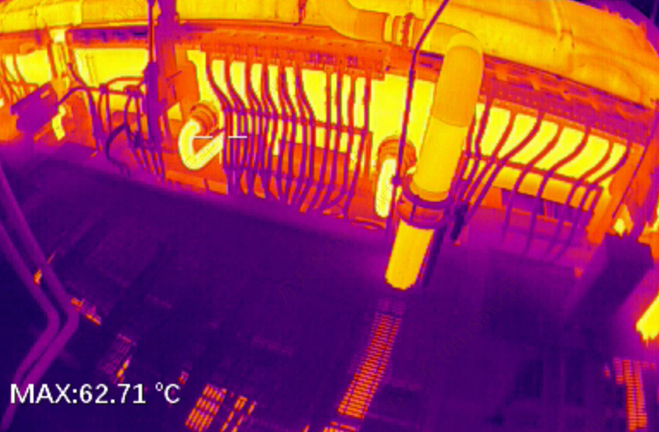In the rapidly evolving power industry, safety and efficiency are always two core concerns. With ongoing technological advancements, handheld thermal cameras, as advanced non-contact temperature measurement tools, are increasingly becoming indispensable "safety guards" and "efficiency enhancers" in the electric power sector. This article explores the extensive applications and unique value of handheld thermal cameras in the power industry.
Enhancing Power Inspections with Handheld Thermal Cameras
As the name suggests, a handheld thermal camera is a portable and efficient infrared temperature measurement device. It utilizes advanced thermal imaging technology to convert the invisible infrared energy emitted by objects into intuitive thermal images, allowing on-site personnel to quickly capture the temperature distribution on equipment surfaces. This capability is particularly important during power inspections. Traditional inspection methods often struggle to detect potential internal faults, whereas handheld thermal cameras can easily penetrate surfaces and pinpoint issues, making them valuable tools for non-destructive power inspections.
Accurate Temperature Measurement and Early Fault Warning
The power system is complex and vast, and even a minor fault can trigger a chain reaction, leading to significant economic losses or safety incidents. Therefore, fault prevention is a critical issue in the power industry. Handheld thermal cameras, with their high-precision temperature measurement capabilities, can conduct comprehensive temperature checks on power equipment in advance, promptly identifying and alerting potential fault points. For instance, in critical areas such as transformers and cable joints, a handheld thermal camera's scan can quickly detect abnormal temperature areas, allowing for timely measures to prevent faults, reduce maintenance costs, and ensure the safe and efficient operation of the power system.
Non-Contact Temperature Measurement for Personnel Safety
Many devices in the power industry involve high voltage and high temperatures, and traditional contact-based temperature measurement methods are not only inefficient but also pose significant safety risks. Handheld thermal cameras use non-contact measurement methods, providing accurate temperature data without direct contact with the object being measured. This feature greatly enhances the safety of the measurement process and ensures the safety of on-site personnel.
Efficient Troubleshooting and Improved Maintenance Efficiency
With the vast power grid system and heavy maintenance tasks, improving work efficiency is a key focus in the power industry. Handheld thermal cameras, with their portable, rapid, and accurate features, have brought revolutionary changes to operation and maintenance work. During inspections, maintenance personnel only need to hold the device and scan the target area to quickly obtain the temperature distribution of the equipment and assess its operating condition. This efficient troubleshooting method not only shortens inspection cycles but also increases the accuracy of fault location, providing strong support for the stable operation of the power system.
In summary, the application prospects of handheld thermal cameras in the power industry are broad. They not only improve the efficiency and accuracy of power inspections but also reduce the likelihood of faults and maintenance costs. With continuous technological advancements and deeper applications, handheld thermal cameras are expected to play an even more significant role in the power industry, contributing more to its safety, efficiency, and sustainable development.













.svg)



_fuben.jpg)

